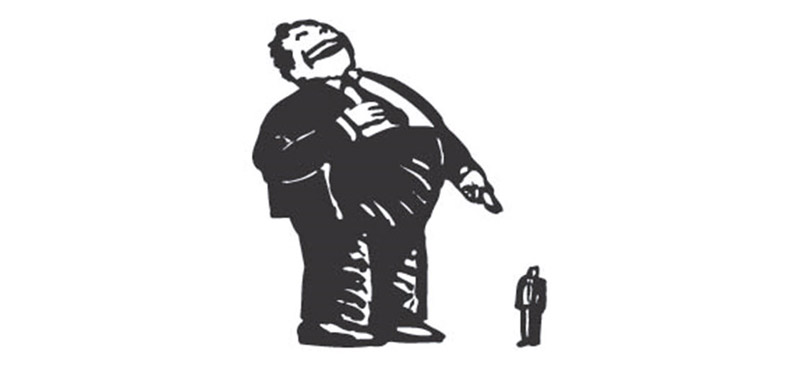The Power of Shortcuts, Best Advice Starting 2023, and a Cow that Comes When She’s Called
So much to cover in this blog post, so let’s start with:
The Power of Shortcuts
This Christmas, I received a new phone. Technically, it’s new to me, but not new (it’s an iPhone 12), but compared to my old iPhone Zero, it’s amazing.
I was trying to figure out some complicated process with it and my son walked by. He watched me for about 10 seconds and then said: “Dad, what are you trying to do?”
I told him.
“Well, just do this.” And he took my phone and with a few click-here’s, a click-there, one swipe this way… he did what I wanted to do.
Young whippersnapper. For him, it really wasn’t so complicated.
It pays to know shortcuts.
In business, there are Shortcuts, too
I just spoke at an amazing conference with hundreds of business owners in my audience and every one of them was a top producing business. I believe most of the owners (if not all of them), ran multi-million-dollar companies and they were all at the top of their game.
But before I spoke to this group, I had interviewed over a dozen of these owners to learn more about problems they were having. And with each interview I completed, with every owner I spoke to, I had a long list of notes on ways these owners were running their businesses ineffectively and how they could run them more easily.
You see, these owners were all marketing their businesses in the hardest way possible. They were using methods that really don’t work well (sometimes don’t work at all) AND techniques that cost them a lot of time and money AND steps that allowed their competition to copy them.
The majority of these owners didn’t know that there are business shortcuts that Destination Business owners use to attract more customers, at less cost, with less time expended, with techniques that make it nearly impossible for your business to be copied by competitors.
Would you like to learn these Destination Shortcuts? Learn them here:
Here’s some Big News on our Destination BootCamp class, the only 2½ day class where I teach my entire 14-step strategy to make your business a Destination.
Registration will open soon for our first live, in-person (everyone sitting in the same room, learning and talking to each other with me presenting in front of the room!), Destination BootCamp class.
This will first in-person Destination BootCamp class since 2020 and this one will be held on April 25-27.
We’re finishing all the hotel details now and our DestinationBootCamp.com website will be taking registrations soon, but if you want to be notified immediately when the site is live, just email me at [email protected] and I’ll shoot you an email first.
Upcoming February 7-9 Destination Train-the-Trainer class:
If you would like to become one of our certified Facilitators who can lead our Destination Creation Course (my shortened version of the BootCamp), make sure you register now for our class on February 7-9, (presented virtually via Zoom).
When you complete the Destination Train-the-Trainer Facilitator class, you’ll join the list of our North American Facilitators who can lead business owners through my class right in your community.
To see our USA Facilitators, click here, and to see our Canadian Facilitators, click here.
When you’re on the DestinationCreationCourse.com website, you can also click on the Facilitator map to find if you State or Province has a Facilitator in it yet.
If you’re wondering if this class would be good for you, your association, or your community, just give me a call at (970) 281-2923. This class isn’t for everyone, but you might just be our next, great Facilitator bringing Destination training to business owners who need it.
My Top Piece of Advice for 2023
Here’s my go-to piece of advice for 2023 and I found this nugget of wisdom on a greeting card. Everyone reading this e-newsletter should paste this on their mirror, look at it daily, and buy a couple of these cards to send to your best friends. Click here to see my advice:
Thank you, Near Modern Disaster greeting card company, for creating this!
The cow who comes when I call her
Here’s something to smile about: Every time Peg and I go to our daughter’s farm, we help her with her cows, steers and chickens.
A couple of years ago, we went with her to a dairy that had several baby calves they wanted to sell and as our daughter picked out the ones she wanted to buy, I roamed around the barn. There in a back stall was a little, shy calf that had a face like Bambi. Big eyes, teetering on her young legs, looking right at me.
“I want this one,” I told my daughter.
Jenna told me that she’d already spent the money she brought to buy the calves she wanted. They were already being loaded in her trailer.
So, I asked her, “How about if I buy her?”
She agreed, I paid, and I immediately named her Fawn.
Fast forward to today, and that little calf has grown up, and still remembers me. In fact, when I go to our daughter’s farm, I can call Fawn from the edge of the fence and she comes running.
For your entertainment: If you’d like to see and hear me calling my cow, click here to see the YouTube video.
Wrap-Up
Don’t overthink 2023. Learn something new. Use powerful shortcuts.
Attend a Destination class!
And you’ll be prepared for whatever economy we find ourselves in this year.
Thanks!
Jon Schallert














